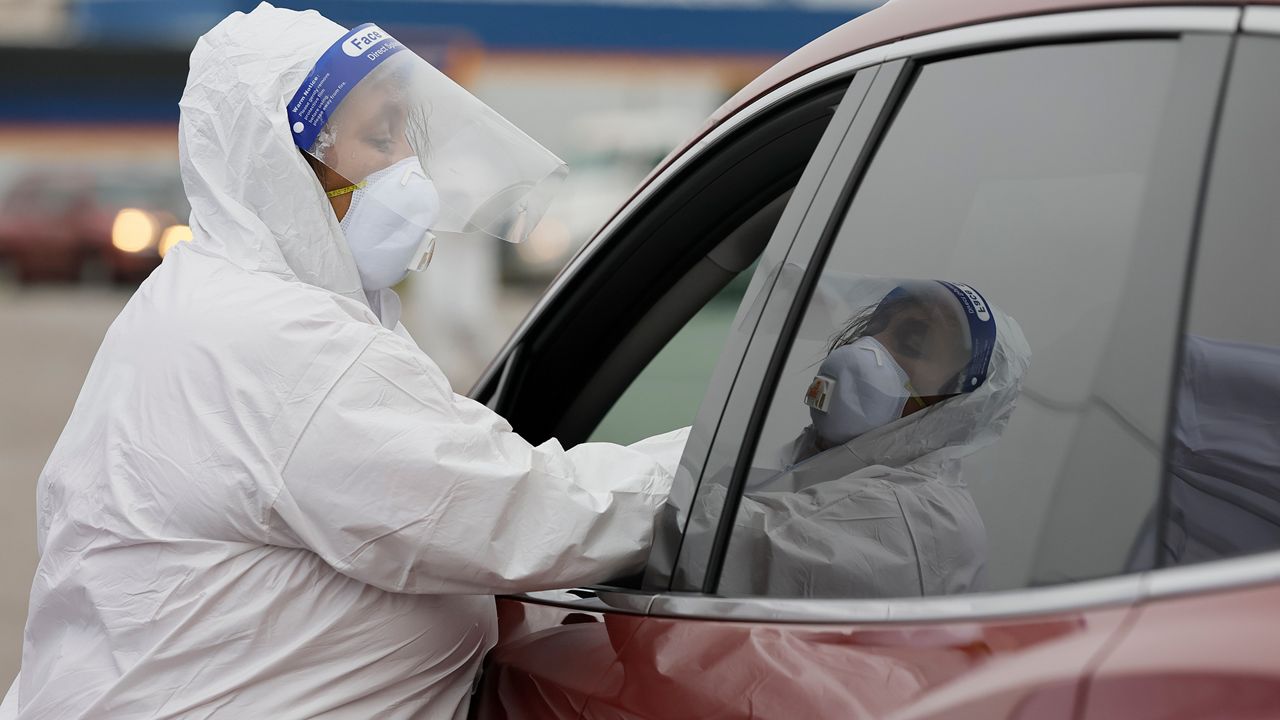COLUMBUS, Ohio — Ohio health officials struck an optimistic tone Friday as COVID-19 hospitalizations continued to decline across the state.
Some hospitals in the state are resuming elective surgeries that were paused during the omicron surge, Ohio Health Director Dr. Bruce Vanderhoff said. At other hospitals, the Ohio National Guard is ending its surge support.
“Worldwide, the omicron variant has produced a fairly dramatic pattern of illness starting with a steep climb in cases, followed by an equally steep decline. Ohio is experiencing the same pattern repeated in other parts of the nation and the world as this highly contagious COVID-19 omicron variant continues to make its way through the state,” Vanderhoff said during a news conference.
The Ohio National Guard is in the process of a "drawdown" with hospitals in parts of the state, but there is no end date for the mission at this time, spokesperson Stephanie Beougher said in a statement Friday. Nearly 2,400 Ohio National Guard and State Defense Force members have helped with testing or provided clinical and general support to a total of 60 Ohio hospitals during the omicron surge.
"There are hospital and testing site support missions coming to a close in several regions of the state, so there’s expected to be a drawdown of the numbers during the next few weeks," Beougher said. "Many of the Ohio National Guard members who served their community at a time of great need during the COVID surge will be returning to their families, civilian obligations, and military training."
As of the state's latest update, 3,348 patients were hospitalized with COVID-19 in Ohio, which represents a 50.4% decline from the Jan. 10 peak of 6,749. Hospitalizations have been “falling daily” since the peak, Vanderhoff said.

“We are feeling hopeful as we begin February that better days are ahead, but remember, we are still a very long way from having case levels like those we were seeing in the late spring through the early fall,” Vanderhoff said.
Virus numbers have declined most significantly in northeast Ohio, while some southern areas in the state have seen more moderate declines. Vanderhoff said some hospitals, especially in the southern regions, still need the Ohio National Guard’s support.
Dr. Patty Manning, chief of staff at Cincinnati Children’s Hospital, said she is looking forward to the Pfizer vaccine possibly getting emergency use authorization for children aged 2 to 4.
“I can tell you that omicron had a significant impact on kids. We saw a dramatic rise in our hospital and in children's hospitals across the state in hospitalized children at the middle to end of December,” she said.
In Ohio, the children who have been hospitalized are “largely unvaccinated,” Manning said. At the peak of the omicron surge, Cincinnati Children’s was treating more than 60 children hospitalized with COVID-19, she said.
“It was terrifying to see that many children testing positive, coming to the hospital, being ill with COVID,” Manning said.
In the Cleveland and Akron areas, the children’s hospitals are seeing rising numbers of the post infection condition MIS-C — multisystem inflammatory syndrome in children. Manning said the inflammatory condition can involve the heart and become severe. She said hospitals throughout Ohio anticipate seeing more of these cases in the coming weeks.
The Ohio Department of Health reported Friday that the state is also seeing an increase in the flow of at-home tests coming to Ohio.
After pausing distribution of home tests to libraries and commnunity centers due to a lack of supply in January, the Ohio Department of Health was recently able to resume that distribution. The state distributed 875,000 home tests in January, prioritizing K-12 schools to receive those tests. School districts in Ohio have been sending these tests home with students.
As the virus outlook improves, Vanderhoff said COVID-19 numbers could soon return to manageable levels.
“There's no crystal ball to tell us what will be coming next," Vanderhoff said. "COVID-19 is almost certainly here to stay, so now the question for us is, how do we learn to live with it and at what point have we moved from something that's truly a pandemic to something more endemic, and how we make that transition in the best way?"



